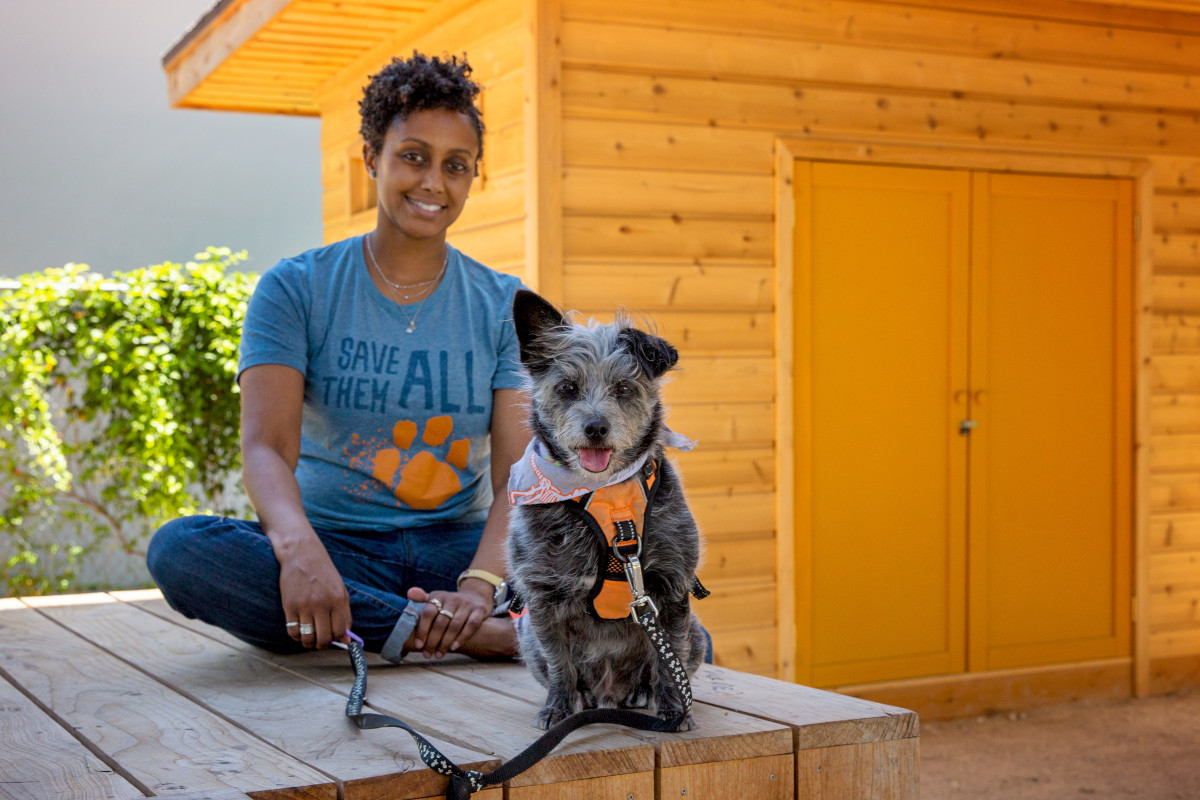Jen Reeder
When animal shelters had to close their doors due to pandemic restrictions, many Americans stepped up to foster (and in some cases, adopt) pets. It’s a phenomenon that has captured the attention of shelter directors and other animal welfare advocates.
This March, Kristen Hassen, director of animal services at Pima Animal Care Center, the municipal animal shelter in Tucson, Arizona, co-founded Human Animal Support Services, a network of over 500 shelter leaders trying to transform the role of animal services in the United States.
“We really believe foster is the future of how we house most animals, and that is the lesson of COVID,” she says. “Foster is going to be a critical piece of how we move forward.”
Open-admission shelters must take in any companion animals relinquished to them or found as strays; Pima Animal Care Center typically takes in around 19,000 pets a year. Hassen says about 95 percent of them are in good health, and that many of the dogs know “sit” and “lay down,” and plenty of cats love to cuddle.
Making Room
But space is always an issue – which is where fostering comes in. When people temporarily care for an animal in their home, it opens up a spot in a kennel at the shelter and potentially saves an animal from being euthanized because there just isn’t room.
Fosters can also help by boarding pets of people facing a temporary crisis, such as being hospitalized for COVID-19 or losing their job or home during the pandemic recession. When the crisis is over, the pet is returned to their owner instead of rehomed by the shelter.
Pet lovers don’t need to be official volunteers to help, either. For instance, often when people
 find a lost dog or cat, they take the animal to the local shelter, where the pet might go unclaimed due to a perceived stigma (or myriad other reasons) and need to be rehomed. But Hassen hopes to see that change, since about half of strays are found only a few houses or blocks away from their home.
find a lost dog or cat, they take the animal to the local shelter, where the pet might go unclaimed due to a perceived stigma (or myriad other reasons) and need to be rehomed. But Hassen hopes to see that change, since about half of strays are found only a few houses or blocks away from their home.
“What we’re starting to do is have people call the shelter and file a found report,” she says. “If you can hold that animal for a few hours to a couple of days, it gives us time to track that dog down and read his microchip number and try to get it home. It’s better for everyone, and it helps get those animals home.”
Less Stress, Better Evaluations
Julie Castle, CEO of Best Friends Animal Society, a national nonprofit working to make America a “no-kill” country by 2025, agreed that fostering is a core component for the future of animal sheltering.
“Even the nicest shelters can be stressful places for animals. Being in a kennel surrounded by dozens or hundreds of other animals is a completely unnatural environment for a pet,” she said. “Fostering allows pets to decompress in a home setting and have a less stressful experience while they are waiting for an adoptive home. By allowing them to be in a home setting, we get to see their true nature and personalities – something that can be hard to discern in a shelter environment.”
Castle says data collected from shelters across America by the management system Petpoint found the number of dogs in foster care was 19.2 percent higher for the week of September 5, 2020, than the same time last year, and cats are also widening the gap with an 11.7 percent increase. She finds it inspiring and hopes the trend continues.
“The pandemic showed us what’s possible when entire communities come together to help the animals that live in that community,” she said. “This will allow us to save more lives and keep more families together.”
This article was reviewed/edited by board-certified veterinary behaviorist Dr. Kenneth Martin and/or veterinary technician specialist in behavior Debbie Martin, LVT.




